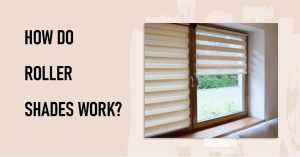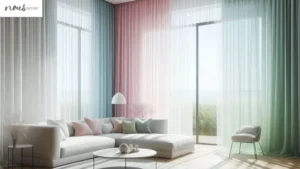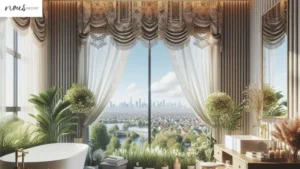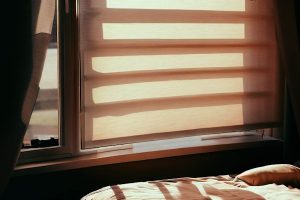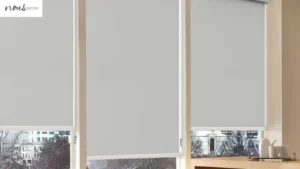Pleated shades are a classic window treatment that can add sophistication and elegance to any room. They’re perfect for controlling both the amount of light entering a room, as well as for providing privacy.
Made of pleated fabric, these shades give windows an interesting texture and shape while also helping to insulate against heat or cold. With so many options available, it’s easy to find the perfect style and color that will complement any home décor.
Whether you’re looking for something modern or traditional, pleated shades are sure to be a great choice. Let’s start exploring rigid window treatments with Nousdecor by reading on now!
Key Takeaways
- Pleated Shades are a classic window treatment that adds sophistication and elegance to any room.
- They are made of pleated fabric that provides texture and insulation and come in various materials and colors.
- Proper measuring and installation is important for optimal coverage and energy efficiency.
- Pleated Shades offer light control and privacy options while being eco-friendly and practical.
Understanding the Anatomy of Pleated Shades
Pleated shades look great, and understanding how they work can add to your appreciation of them! Pleated shades are made from a variety of materials, including fabric, paper or plastic. The material composition affects the amount of light control you can achieve with the shade.
With light filtering materials, you will have some protection from the sun while still allowing natural light into your home. If you prefer total darkness in a room, blackout pleated shades may be more suitable for your needs.
Motorized operation is an option on most pleated blind coverings and allows you to open and close them with the push of a button rather than having to manually pull the cords each time.
The choice of fabric also plays a role in how well your pleated shades work. You can find fabrics that are thicker or thinner depending on how much insulation and privacy you need in the room.
Different textures give additional options for design flexibility, as well as varying amounts of opacity for light control purposes. From sheer fabrics to blackout options, there is something available for every style preference and practical need.
Exploring all the different fabric options available for pleated shades can be fun! With so many choices available it’s easy to find colors and patterns that suit any décor theme while also giving you optimal performance levels for blocking out heat or keeping rooms dark during movie nights at home.
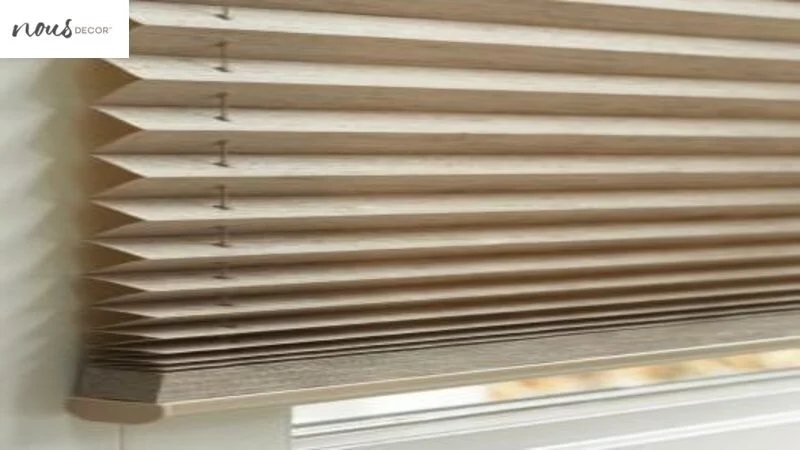
Exploring Different Fabric Options
Explore different fabric options for your window coverings to achieve the desired look and feel — from luxurious silks to elegant cottons. Pleated window coverings offer a variety of fabrics that can be used for customization, allowing you to get the perfect fit for every room in your home.
Consider these factors when selecting the right fabric:
- Fabric thickness – thinner fabrics are great for controlling light levels while thicker ones are great at providing privacy.
- Fabric durability – some fabrics are made to withstand more wear and tear than others, making them better suited for high-traffic areas.
- Light filtering – depending on the amount of natural light you want in each room, you may choose a fabric that allows more or less light through your windows.
- Color and pattern – pleated shades come in a range of colors and patterns, so it’s important to select one that complements your decorating style.
No matter what type of fabric you choose for your pleated shades, make sure it is well constructed with quality materials so it will last for years to come. To ensure that your pleated shade lasts as long as possible, consider investing in additional features such as thermal insulation or blackout liners.
With these added elements, you can help regulate temperature while also blocking out unwanted noise from outside sources. With all these elements taken into account, choosing the right color and pattern becomes easier than ever before!
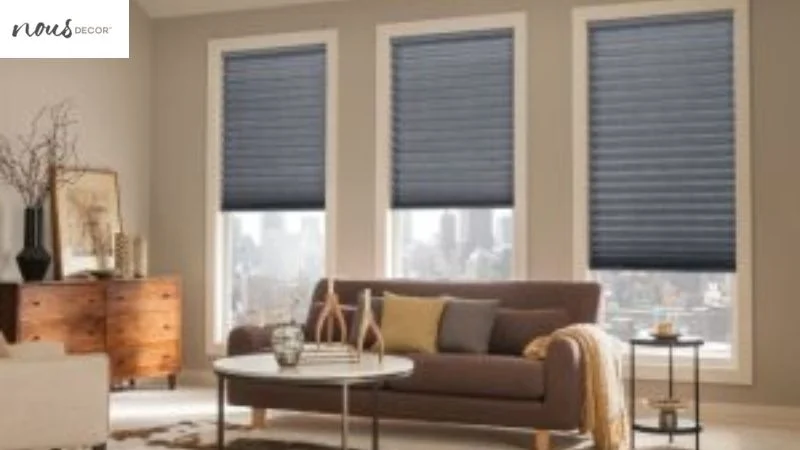
Choosing the Right Color and Pattern
When selecting the perfect pleated shade for your home, take into account color and pattern to ensure it complements your decorating style. There are a number of fabric options available for pleated shades, so you have plenty of choices in terms of texture, light control, and colors.
Consider the existing color scheme in the room where you will be installing the pleated shade to help you determine what kind of fabric would look best. Look at how much natural sunlight comes into the room when choosing fabrics as well; some fabrics provide more light control than others.
It is also important to pay attention to any patterns that might be featured on the pleated shade’s fabric. Patterns can add dimension and interest to a space but may not blend with all types of decor.
If you want a more subtle effect, go with solids or neutral tones; if you’re looking for something bolder, choose bright colors or fun patterns like stripes or checks.
No matter what type of fabric you choose for your pleated shades, make sure it works with both the design aesthetic and function of your home decor. Without sacrificing style or light control, pick a hue that will blend nicely with its surroundings and continue to enhance your living space for years to come.
With this thought in mind, it’s time to explore how do stylish pleated blinds work.
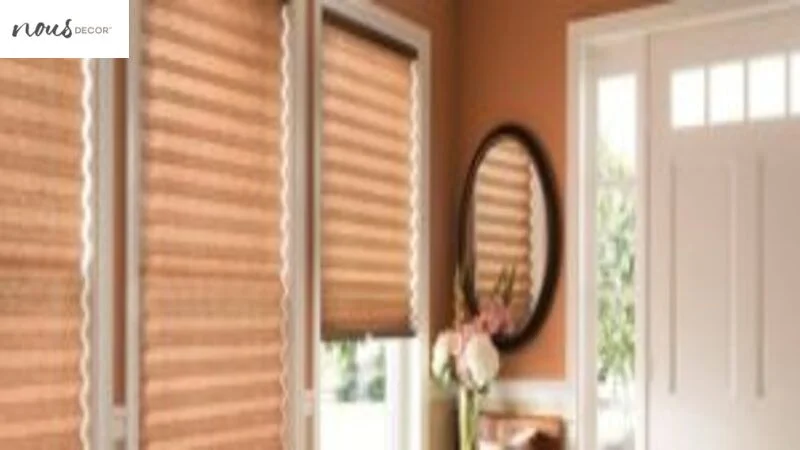
How do pleated shades work?
Gently swaying in the breeze, pleated shades offer a stylish and modern way to control the amount of light that enters your home. Pleated shades are made from a variety of materials like fabric, vinyl, paper, or bamboo.
How they work is relatively simple: when you pull them down, the fabric or material will form neat horizontal pleats and create an accordion-like fold. This helps reduce glare and block out unwanted light while still allowing some natural sunlight to come in.
When selecting sizes for your pleated shade window treatments, it is important to measure each window carefully before purchasing. Different manufacturers may have different size requirements for their products so make sure to double-check each measurement against your chosen brand’s guidelines.
Controlling the amount of light entering a room also means considering other factors such as room orientation and climate conditions.
When measuring windows for pleated shades one should consider both width and height dimensions in order to ensure optimal coverage from sun rays and improve energy efficiency within the home.
Additionally, choosing fabrics with blackout properties can further increase privacy levels during bright days while still allowing filtered light in through its textured material layers. Thus making pleated shades ideal for creating comfortable living spaces all year long without sacrificing style or functionality.

Installation and Maintenance Tips
To get the most out of your pleated window treatments, it’s important to properly install and maintain them. Measuring correctly is essential for a successful installation as it ensures that the correct hardware is used and that the shades fit perfectly against the windows.
It’s imperative to use accurate measurements when ordering shades as this will ensure they are delivered in the correct size. In addition, using proper installation techniques is key – secure fittings and mounting systems should be used where possible, while also taking into account any special features such as cord safety devices.
Furthermore, hardware selection should take into account factors such as weight capacity, colour choices and decorative options available to make sure you get exactly what you need for your space.
As one of the contemporary window treatment suggestions, when installing your pleated shades, professional help may be necessary if you don’t feel comfortable doing it yourself or if there are any complications due to existing structures around the windows.
Regular inspections of all components should be conducted at least twice a year – checking for signs of damage or wear on both fabric and hardware – so that any necessary repairs can be made swiftly before more serious problems arise. Check out our article on restringing pleated shade step-by-step if the need to fix ever arises.
Cleaning is also an important part of maintenance; vacuuming regularly with a soft brush attachment will help keep dust from accumulating on the fabric while damp wiping can remove dirt build up without leaving streaks or marks behind. For more info just check out our pleated shade cleaning tips!
By following these DIY pleated shade installation guide and maintenance, you’ll ensure they last longer and look better in your home for years to come. With their simple beauty and timeless style adding value to any room in your home, now’s the perfect time explore all the benefits of using pleated shades within your interior design scheme.
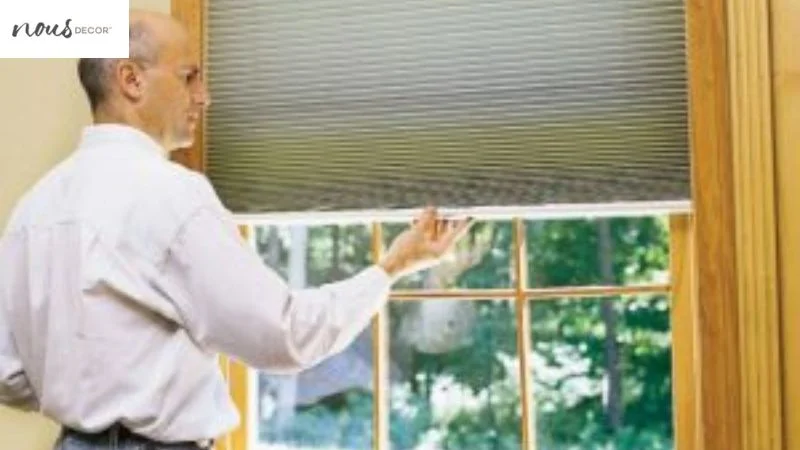
Benefits of Using Pleated Shades in Your Home
You’ll love the timeless style these window treatments bring to any room, adding a touch of elegance and sophistication. Pleated shades are a great choice for those looking to add beauty to their home without sacrificing practicality. The Pleated Shades Pros And Cons in your home include eco-friendly materials, light control, and privacy options.
The eco-friendly materials used in pleated shades create an energy efficient environment while still allowing natural sunlight into your space. Not only will you enjoy the warm atmosphere that natural light creates, but also the energy savings from blocking out harmful ultraviolet rays that can heat up homes during summer months.
In addition to being eco-friendly, pleated shades also offer superior control over incoming light and greater levels of privacy than other types of window treatments.
With multiple layers on each shade, you can customize how much or how little light is allowed into your room—ideal for bathrooms (see stylish shower window solutions), bedrooms (see Bedroom Window Treatments Ideas), or living rooms (see Window Treatment Ideas For Living Room) where you want complete darkness when it’s time to relax or sleep.
And thanks to their design pattern, no one outside will be able to see inside even when they’re fully open—giving you peace of mind that your family’s privacy is protected at all times.
No matter what look you’re trying to achieve in your home, pleated shades have something for everyone; not only do they provide a stunning aesthetic but they also ensure ultimate comfort and security as well.
Now that you know all about the advantages of having pleated shades in your home, let’s move on to comparing them against cellular shades so you can make an informed decision about which type is right for you!
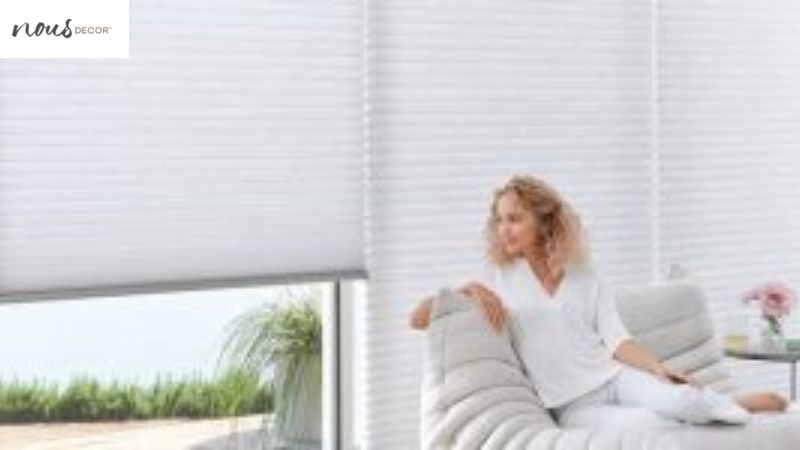
Comparing Pleated Shades vs Cellular Shades
Comparing two types of window treatments can be a tricky decision, but it doesn’t have to be! Let’s break down the differences between pleated and cellular shades so you can make an informed choice for your home.
When looking at Pleated Shades Vs Cellular Shades, there are advantages and disadvantages to both:
- Advantages of Pleated Shades:
- Lightweight material provides insulation without being too bulky.
- Inexpensive compared to other forms of window treatments.
- Low maintenance – cleaning is as simple as dusting or wiping with a damp cloth.
- Disadvantages of Pleated Shades:
- Not suitable for large windows due to their lightweight materials which may not provide adequate coverage.
- Less energy efficient than other options like cellular shades.
- Can only be opened or closed from the bottom up, so they don’t offer much privacy when open.
- Advantages of Cellular Shades:
- Highly energy efficient with honeycomb-shaped cells that trap air inside them, providing better insulation against heat and cold in any season.
- Greater privacy control – they can be opened or closed from the top down allowing natural light in while still offering more security than traditional curtains/drapes do when open.
- Disadvantages of Cellular Shades:
- Bulky due to its “honeycomb” design making them unsuitable for smaller windows where space is limited.
- They are also more expensive than pleated shades due to their higher quality materials and construction process needed for the honeycomb design which adds extra costs associated with insulation benefits that come with using them in your home.
In summary, both Pleated Shades Vs Honeycomb have unique benefits that make them ideal choices depending on what kind of look you’re going for and what kinds of features you need in order to get the most out of your window treatments in terms of aesthetic appeal, cost savings, energy efficiency, and privacy control features offered by each option respectively.
As always consult with professionals if you need help deciding which type best fits your needs before investing in either one!
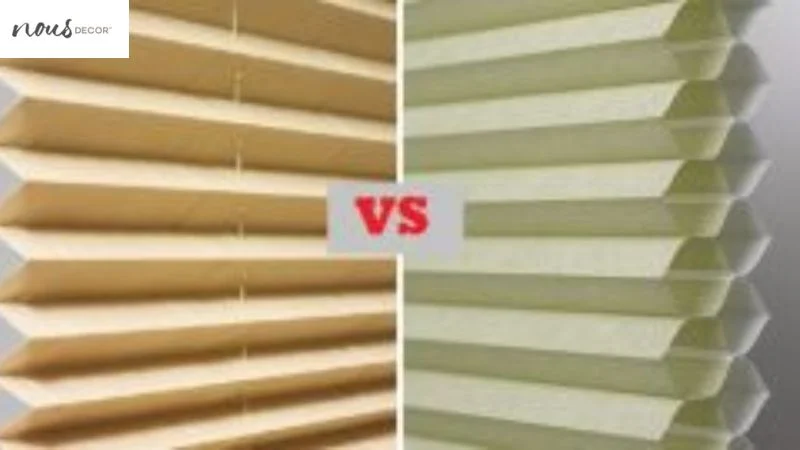
Frequently Asked Questions
Conclusion
Pleated shades are an excellent choice for anyone looking to add a touch of style and sophistication to their home. Their simple yet effective design allows them to be used in any room, and with a variety of fabric options, it’s easy to find the perfect color and pattern.
They’re easy to install and maintain, plus they offer numerous benefits such as insulation, sun protection, and light control. All in all, pleated shades will give your home a beautiful new look that you can enjoy for years to come.
With so many advantages offered by pleated shades, it’s no wonder why they’re becoming increasingly popular among homeowners who want modern appeal without sacrificing practicality.

